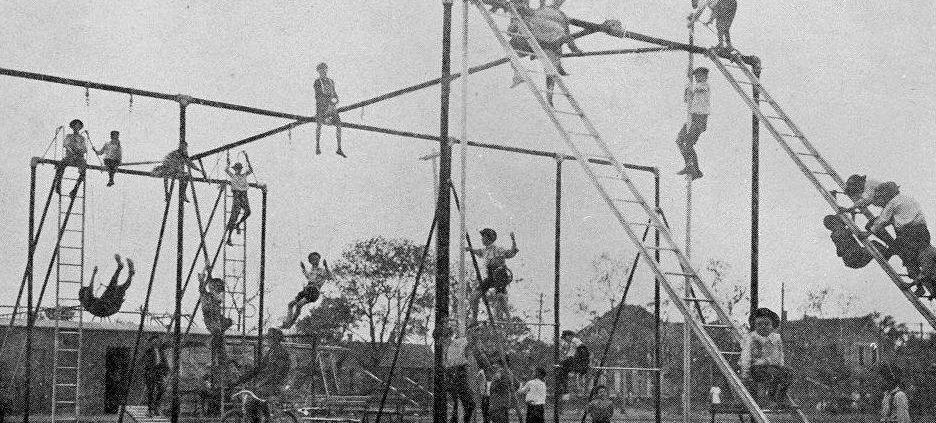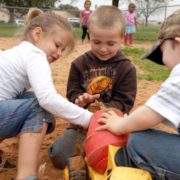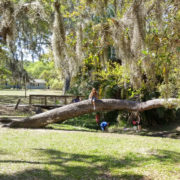Ruled By Playground Rules
Playground rules.
This has been a topic of discussion the past few days at our house. It started when I watched this video about a “no rules” playground in New Zealand. Then one of my daughter’s schooled friends was finding so much joy doing things on our neighborhood playground that wouldn’t be allowed at school, we decided to take a closer look at what are the typical playground rules and do they have merit.
We complied a list of the playground rules my daughter remembered from her short time at public school kindergarten, the rules her friend said were currently being enforced at her school and other rules we pulled from school websites. I was surprised by how many rules were commonly enforced on school playgrounds—and how many appeared to be senseless.
We discussed why certain rules seemed unnecessary, appeared irrational, or could even be counterproductive.
Below is the list of playground rules we compiled:
Playground Rules List
- NO “roaring”, “growling” or other “mean” animal noises when pretending
- NO handstands or cartwheels.
- NO swinging on your stomach
- NO twisting on the swings
- NO side-to-side motion on the swings
- NO more than one person on a swing at a time.
- NO using a swing for more than 30 swings.
- NO standing on the swings.
- NO twisting the seats on the swing.
- NO help from others when swinging. (NO pushing from a friend!)
- NO sitting on the swings facing the incorrect way.
- NO using or even touching the handicap swing.
- NO playing tag or other chasing games.
- NO “negative comments” to peers.
- NO climbing on walls, fences, railings, ledges, dirt hills, trees, or equipment (unless it is meant for climbing).
- NO jumping off any bars or other equipment.
- NO hanging upside-down on any bars.
- NO sitting on the bars.
- NO going the wrong way on the bars. One way only.
- NO running.
- NO talking while in line going in and out to the playground (have a bubble in your mouth).
- NO forgetting your place in line.
- NO waving to anyone while waiting in line to go in or out to the playground.
- NO horseplay.
- NO going down the slides any way except seated feet first.
- NO walking up the slides.
- NO playing in any areas without adult supervision.
- NO going outside playground boundaries.
- NO pens or pencils allowed on the playground.
- NO throwing or picking up dirt, sand, woodchips, rocks, or sticks.
- NO eating or drinking on the playground.
- NO saving swings or seats for anyone.
- NO acting like characters in video games.
What happens when these rules are broken? Perhaps a warning at first if they are lucky, but punishments can be imposed even without warnings. Punishments can be timeouts, loss of recess, lunchroom detention, referral to principal’s office, or even paddling (yes, 19 states still allow corporal punishment in school).
There is overwhelming evidence showing the importance of free play, but can recess with these type of rigid rules and strict punishments still be considered beneficial “free” play? It seems this activity could more appropriately be described as: “Brief exposure to, and extremely limited use of, outdoor equipment under strictly controlled supervision”.
When that school in New Zealand removed rules from recess what was the result? According to the principal: “Concentration is up, incidents of bullying are way down, confidence is sky high, and injuries—far fewer.” I must say that I’ve seen similar results after observing our daughter participate in regular free play opportunities at local parks and playgrounds, where rules are few to none. There aren’t adult rule enforcers on constant lookout for offenders. Kids are free from being ruled by rules. This is what true free play should look like.
—
Further Reading: http://www.kidsplayspace.com.au/pla…
By David Martin
David is the owner of Brighter Technologies and Brighter Schooling. He is a Parent, Advocate for Self-Directed Education, Entrepreneur & Life-Long Learner.







